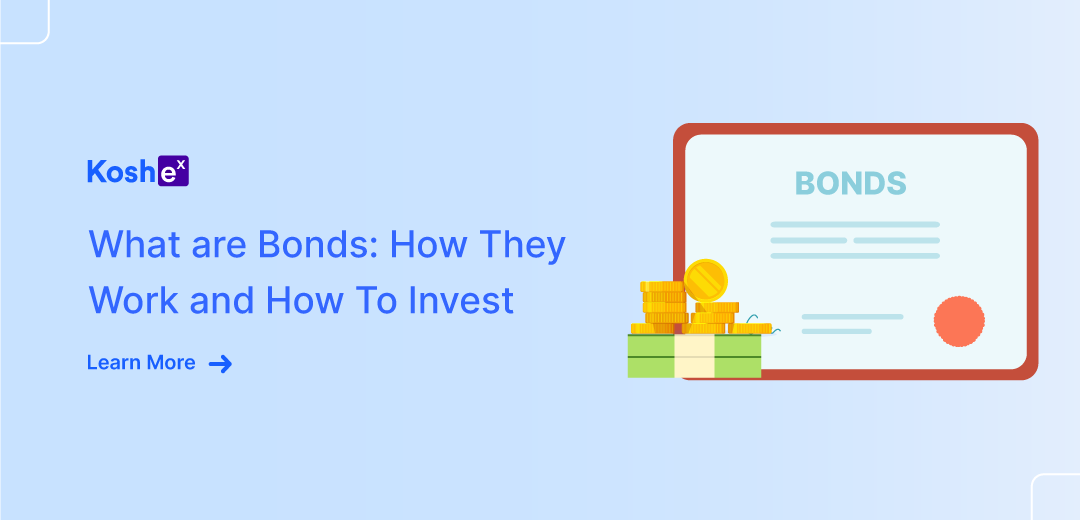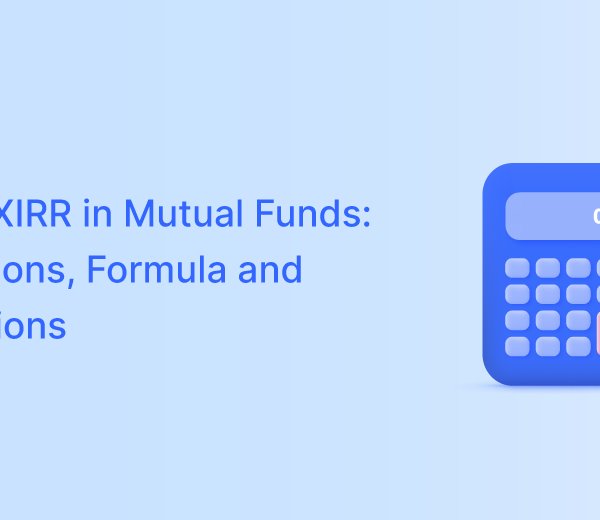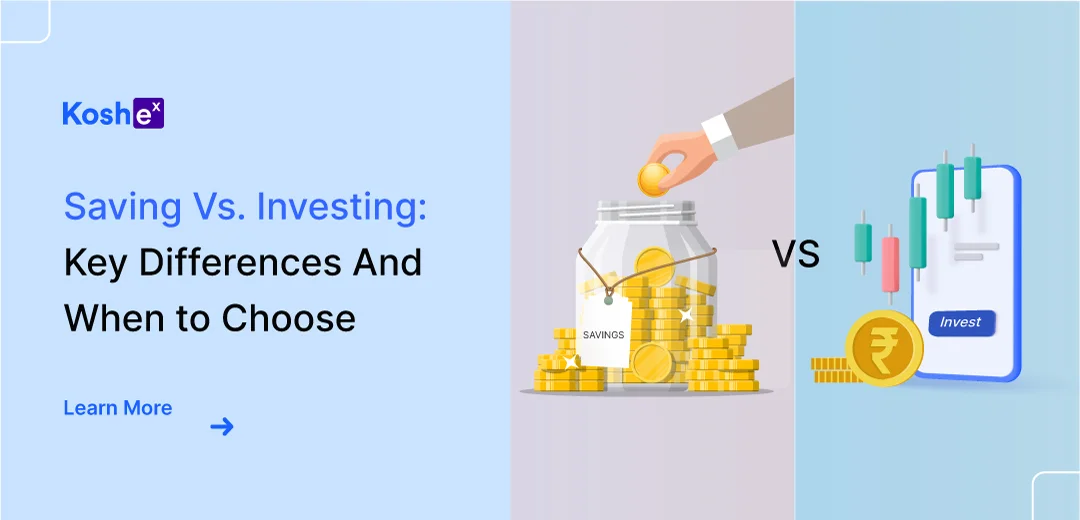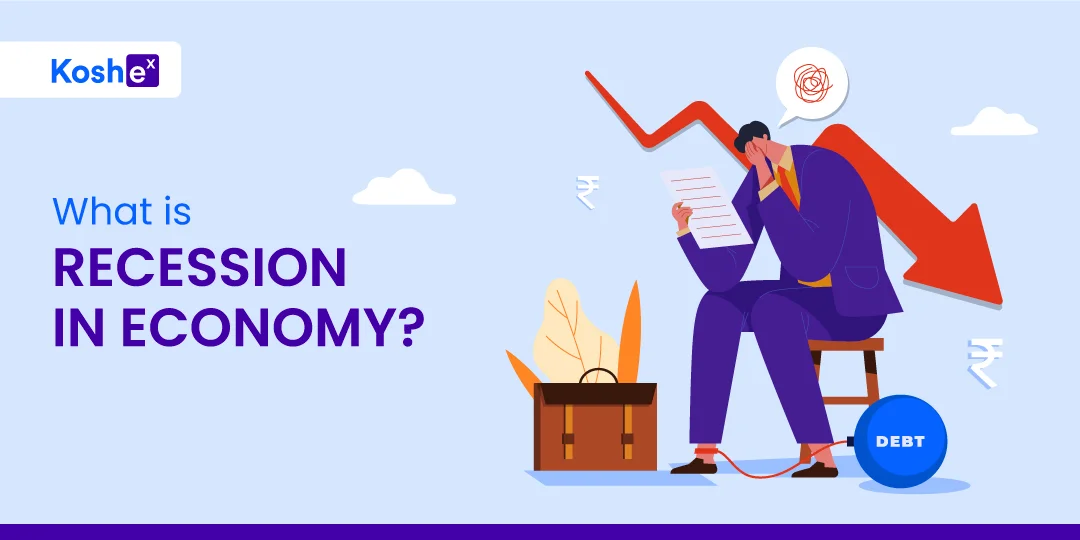Many people are keen on investing in the stock market. However, the risks and fluctuations that accompany these markets deter many investors from participating in them. For people who are risk averse, bonds are considered to be a suitable investment instrument. Bonds offer stability and consistent income, making them an essential part of a well-diversified portfolio.
In this blog, we will be explaining what bonds are, how they work, and how you can invest in them effectively.
What Are Bonds?
Bonds are a type of debt instrument. When you buy a bond, you are essentially lending money to the bond issuer, which could be a corporation, municipality, or government entity. In return, the issuer agrees to pay you interest at a predetermined rate over the bond’s return. Also, the issuer repays the principal (the amount you originally lent) at the end of the term (known as the bond’s maturity).
What Are The Key Characteristics Of Bonds?
Face Value
Face value implies the price of a single unit of a bond issued by an enterprise. Principal, nominal, or par value is used alternatively to refer to the price of bonds. Issuers are under a legal obligation to return this value to the investor after a stipulated period.
Let’s say an investor chooses to purchase a corporate bond at a face value of ₹5000. The company issuing the bond is thus obliged to return the ₹5000 plus interest to the investor after the maturity of the tenure.
Also Read: Large Cap Mutual Funds
Interest or Coupon Rate
Bonds accrue fixed or floating rates of interest across their tenure, which is payable periodically to creditors. Bond interest rates are also called coupon rates as per the tradition of claiming interest on paper bonds in the form of coupons. The interest earned on a bond depends on several factors like tenure, and the issuer’s reputation in the public debt market.
Yield
The yield on the bond is the rate of return that an investor gets for holding the bond. While the coupon is fixed, the yield is variable and is determined by the secondary market price of the bond and other factors.
There are different types of yield.
- Coupon yield, also known as the coupon rate, is the annual interest rate established when the bond is issued and does not change during the lifespan of the bond.
- The current yield is the bond’s coupon yield divided by its current market price.
- Yield to maturity (YTM) refers to the rate of return that an investment will provide if held until its maturity.
- Yield to call (YTC) is the rate of return that a bondholder will receive if the bond is held until the call date, which happens before the maturity date.
Tenure
Tenure or term refers to the period after which bonds mature. These are financial debt contracts between issuers and investors. Financial and legal obligations for an issuer to the investor or creditor are valid only until the tenure’s end.
Maturity Date
It is the date on which the bond issuer repays bond investors for the money they have lent them. Generally, bonds with maturity periods below 3 years are called short-term bonds, while a tenure of 3 to 10 years is attributed to intermediate-term bonds. Long-term bonds refer to the ones with terms higher than 10 years.
Credit Quality
This refers to the creditors’ consensus on the performance of a company’s assets in the long-term. It is determined by the degree of confidence that investors have in an organisation’s bonds. Credit rating agencies classify bonds based on the risk of a company defaulting on debt repayment.
These agencies assign risk grading to private players in the market and categorise bonds into investment grade and non-investment grade for debt instruments. Investment-grade securities are susceptible to lower yields because of a steady market risk factor, whereas non-investment-grade securities offer high returns at considerable risks.
Also read: What Is Tax-Free Bonds: Features, Benefits & How To Invest
Tradable Bonds
Bonds are tradable in the secondary market. The ownership can thus shift among several investors within a given tenure. These creditors often sell their bonds to other entities when market prices exceed the nominal values as they have an option to secure bonds with high yield and appropriate credit ratings.
How Do Bonds Work?
When a company wants to raise capital, instead of issuing stock or trading a traditional bank loan, they may issue bonds. Investors buy these bonds, effectively lending money to the issuer, and in return, they receive regular interest payments. Therefore, bonds act as a loan between the investor and the issuer.
For example, if a company issues a ₹1,000 bond with a 5% coupon and a 10-year maturity, you would receive ₹50 annually in interest for 10 years. At the end of the 10 years, you would get your ₹1,000 back.
What Are The Types Of Bonds?
Bonds are classified into different categories and the prevailing types of bonds in the public debt market, include:
Fixed-Rate Bonds
Fixed-rate bonds are the most common type of bonds. These bonds pay a fixed interest rate over the life of the bonds. This ensures that the bondholder receives a fixed amount of income for the period of the investment.
Floating-Rate Bonds
Floating-rate bonds are bonds whose interest rate is adjusted periodically according to the market conditions. The interest rate on these bonds fluctuates with changes in the market rate.
Inflation-Linked Bonds
Inflation-linked bonds are bonds that offer a return that is indexed to the inflation rate. As inflation rises, so does the interest rate on these bonds. This ensures that the return on the investment keeps pace with inflation.
Perpetual Bonds
Perpetual bonds are bonds that do not have a maturity date. They offer a fixed interest payment to bondholders indefinitely. Perpetual bonds are popular for their steady and reliable income stream.
Why Should You Invest In Bonds?
Bonds can offer a steady stream of income and are often less volatile than stocks. They are particularly useful for:
Preserving Your Capital – Bonds, especially government bonds, are relatively safe and can protect your investment capital.
Generating Income – For retirees or those looking for consistent income, bonds offer regular interest payments.
Diversification – Adding bonds to a portfolio of stocks can reduce overall portfolio risk, as bond prices often move inversely to stock prices.
How To Invest In Bonds?
- You can invest in bonds from an online stockbroker by opening a Demat and a trading account.
- You can buy bonds directly through an exchange.
- You can buy government bonds through RBI’s Retail Direct Scheme, the NSE’s “NSE goBID” app, or the BSE’s “BSE Direct” app.
How To Choose Bonds For Investment?
Credit Rating – Check the bond’s credit rating. Higher-rated bonds (e.g., AAA) offer lower yields but are safer. Lower-rated bonds, known as “junk bonds,” offer higher yields but come with a much higher risk of default.
Time Horizon – Figure out your investment time frame. If you are investing for the short term, short-duration bonds or bond funds may be preferable since they are less sensitive to interest rate changes.
Yield and Yield To Maturity (YTM) – While the coupon rate tells you how much you will earn annually, the YTM gives you a more complete picture, factoring in the bond’s current price, coupon payments, and time to maturity.
Liquidity – Some bonds are easier to sell than others. For example, government bonds are generally very liquid. This means they can be easily bought or sold in the market. Corporate bonds, especially from smaller or less well-known companies, may be harder to trade.
What Are Bonds – The Conclusion
Although bonds may not have the excitement or growth potential of stocks, they are an important component of a balanced investment portfolio. By understanding how bonds work, their types, and the investment process, investors can choose the right bond for their investment portfolio. Whether you are a conservative investor looking for stability or an aggressive investor looking to diversify your portfolio, bonds can play a crucial role in helping you achieve your financial goals.
When investing in bonds, keep in mind your financial goals, risk tolerance, and time horizon. With the right strategy, bonds can be a powerful tool in your investment portfolio. Sign up with Koshex
Frequently Asked Questions (FAQs)
What is the difference between bond yield and coupon rate?
The coupon rate is the fixed interest rate paid by the bond, while the yield represents the bond’s total return, which includes the interest payments and any changes in the bond’s price. Yield can differ depending on market conditions.
What are masala bonds?
Masala bonds are bonds issued outside of India but denominated in Indian rupees. They are issued by Indian entities in overseas markets, allowing them to raise funds outside India. They give Indian issuers the option to raise funds abroad. They also allow investors outside India to invest in Indian assets without taking on the currency risk associated with the Indian rupee.
Can I invest in bonds through mutual funds?
Yes. Bonds mutual funds and debt mutual funds are a popular way to invest in bonds in India. These funds invest in a variety of bonds, including government securities, corporate bonds, and money market instruments, offering diversification and professional management.









Leave a Comment